Future Prediction

What is the difference between weather forecasting and climate prediction ?
Weather forecasting and climate prediction are two related but distinct fields with different scopes, timescales, and methodologies. Weather forecasting focuses on short-term predictions for specific locations, while climate prediction looks at long-term trends and patterns globally.

What are the limitations of current climate prediction methods ?
The text discusses the limitations of current climate prediction methods, including model uncertainty, natural variability, scenario dependence, data availability and quality, and computational resources. These limitations can impact the accuracy and reliability of predictions, making it difficult to develop effective strategies for mitigating the effects of climate change. Addressing these challenges will be essential for developing more accurate and reliable climate predictions that can support effective decision-making and adaptation strategies in response to climate change.

Can climate data analysis accurately predict future weather patterns ?
Climate data analysis, utilizing sophisticated climate models based on physical laws and accounting for complex interactions within the Earth system, plays a crucial role in predicting future weather patterns. These models allow scenario-based projections and ensemble forecasting to account for uncertainties. While they are continuously improved as new scientific understanding emerges, it's important to distinguish between weather forecasting (short-term events) and climate prediction (long-term trends). Climate prediction involves more variables, broader trends, external forcings, and wider confidence intervals compared to weather forecasting. However, climate models face uncertainties such as natural variability, model discrepancies, emission scenarios, feedback mechanisms, and regional differences. Despite these challenges, climate science has made progress in predicting aspects like global warming, sea level rise, extreme weather events, regional changes, and carbon cycle responses. In conclusion, climate data analysis can provide valuable insights into potential future climate patterns but comes with inherent uncertainties, especially in forecasting specific weather events far into the future. Ongoing advancements in climate science aid in developing informed policies and adaptation strategies.
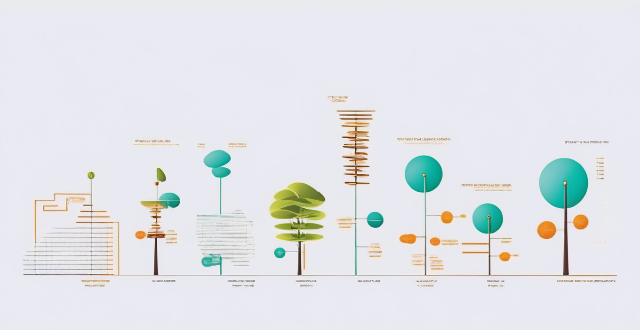
What is climate forecasting ?
Climate forecasting is the application of scientific knowledge and techniques to predict future climate conditions. It involves analyzing historical and current weather patterns, as well as understanding the physical processes that drive them, in order to make predictions about future climate trends. Key components of climate forecasting include data collection, modeling, analysis, and prediction. Climate forecasting plays a crucial role in various sectors including agriculture, water resources management, energy production, and disaster risk reduction. Despite challenges such as the complexity of the climate system and limited historical data, continued research and advancements in technology will improve our ability to predict future climate trends accurately.

How do you use historical data to make predictions about future stock market performance ?
Predicting the stock market's future performance is a complex task that involves analyzing various factors. One common method used by investors and analysts is to study historical data, which can help make informed predictions about future market performance. To use historical data for stock market predictions, it is essential to identify key metrics such as price movements, volume, earnings reports, and economic indicators. Once these metrics are identified, analyze the historical data to identify trends and patterns through technical analysis techniques like moving averages, support and resistance levels, and candlestick patterns. Additionally, consider using fundamental analysis to evaluate underlying factors that drive stock prices, such as financial statements, industry trends, and macroeconomic factors. With the advancement of technology, machine learning and AI models have become popular tools for predicting stock market performance, including neural networks, reinforcement learning, and deep learning. Combining different methods of analysis can lead to more accurate predictions about future stock market performance. However, it's important to remember that no method is foolproof, and there will always be an element of risk involved in investing in the stock market.

What is the impact of climate decisions on future generations ?
This text discusses the far-reaching impacts of climate decisions on future generations, including environmental issues such as rising sea levels and loss of biodiversity, economic shifts related to job markets and infrastructure costs, and societal effects like health concerns and political stability. It emphasizes the importance of taking immediate action to mitigate these impacts and create a sustainable future for all.

How does space exploration inspire future generations ?
Space exploration has been a source of inspiration for future generations in various ways, including igniting curiosity and wonder, advancing scientific knowledge, promoting international collaboration, encouraging careers in STEM, inspiring creativity and art, and nurturing resilience and perseverance. As we look toward the future, space exploration will continue to capture the imagination of young people around the world and spur them on to become the next generation of explorers, scientists, and engineers.

What is the future of e-sports and its integration with technology ?
E-sports, or electronic sports, have seen a meteoric rise in popularity over the past decade. As technology continues to evolve at a rapid pace, the future of e-sports looks brighter than ever before. In this article, we will explore the potential integration of e-sports with technology and what it means for the future of competitive gaming.

Can we trust climate models for future predictions ?
Climate models are designed to predict future changes in the Earth's climate based on scientific principles and past observations. Trust in these models depends on factors such as their scientific foundation, data quality, model complexity, intercomparison, historical validation, uncertainty quantification, and continuous improvement. While no model can perfectly predict the future, climate models offer valuable insights into potential future scenarios based on current knowledge and understanding. However, it is important to recognize their limitations and uncertainties when interpreting their results.

What is the future of carbon credit systems ?
The future of carbon credit systems is uncertain and depends on various factors such as policy decisions, technological advancements, public opinion, and market dynamics. Governments play a crucial role in shaping the future of these systems through regulations and enforcement. Technological innovations can both increase and decrease the value of carbon credits. Public opinion can drive demand for carbon credits, while market dynamics will shape the industry's evolution. Despite challenges, there are opportunities for growth and improvement in this important area of environmental protection.

How can wind energy contribute to a sustainable future ?
Wind energy is a renewable and sustainable source of power that can significantly contribute to a more sustainable future. It offers several benefits including reducing carbon emissions, stimulating economic growth, enhancing energy security, driving technological innovation, compatible land use, community engagement, scalability, improving health impacts, and promoting education and awareness. By incorporating wind energy into our energy mix, we can create a cleaner, healthier, and more sustainable environment for future generations.

What is the future outlook for private equity ?
Private equity (PE) is a dynamic sector of the financial industry that involves investing in or acquiring companies, typically with the aim of improving their operations and selling them at a profit within a few years. The future outlook for private equity is influenced by various factors such as economic conditions, technological advancements, regulatory changes, and market trends. Here's a detailed analysis of what the future might hold for private equity: Economic Influences: Global Economic Growth, Interest Rates, Market Volatility Technological Advancements: Digitization, Artificial Intelligence and Machine Learning, Blockchain Regulatory Changes: Stricter Regulations, Tax Laws Market Trends: ESG Investing, Diversification, Exit Strategies Industry Evolution: Consolidation, Secondary Markets, Direct Investments Challenges and Opportunities: Competition, Talent Retention, Innovation In conclusion, the future of private equity looks promising but not without its challenges. The industry is set to evolve with changing economic conditions, technological advancements, regulatory shifts, and market trends. PE firms that adapt and innovate will be well-positioned to thrive in this dynamic environment.

How accurate are climate models in predicting future weather patterns ?
Climate models are complex mathematical representations designed to predict future weather patterns. The accuracy of these models is influenced by factors such as data quality, model complexity, and uncertainty in future emissions. Limitations include less accurate short-term predictions and uncertainty in model projections. Potential improvements include better data collection, advances in modeling techniques, and collaboration across disciplines.
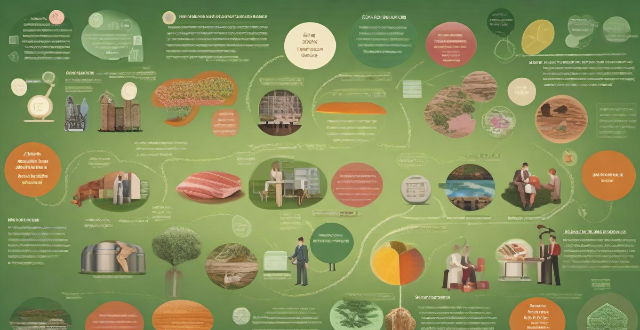
What policies can be implemented to reduce the number of climate refugees in the future ?
Policies to reduce the number of climate refugees in the future include investment in renewable energy, afforestation and reforestation, sustainable agriculture practices, coastal protection measures, and international cooperation and funding. These policies aim to mitigate the effects of climate change and prevent displacement of people due to climate change-related events.
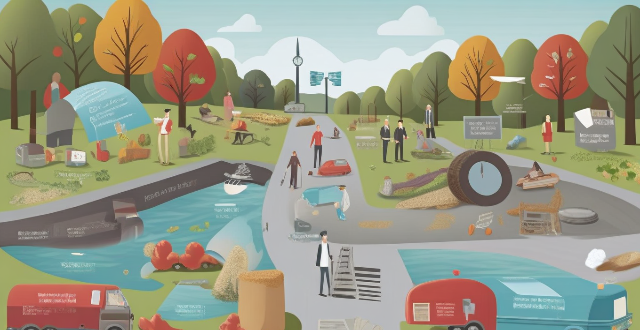
What are the implications of climate change negotiations for future generations ?
The implications of climate change negotiations for future generations are significant and multifaceted, affecting various aspects of life, including the environment, economy, society, and politics. Effective negotiations can lead to preserved natural ecosystems, mitigation of extreme weather events, job creation in renewable energy sector, reduction in energy costs, improved public health, enhanced quality of life, global cooperation, and leadership and innovation. These benefits highlight the importance of prioritizing the interests of future generations in climate change negotiations to ensure a sustainable and equitable world for all.

How does defaulting on a student loan affect future borrowing ?
Defaulting on a student loan can severely impact your financial future, including your ability to borrow money. Here's what happens when you default and how it affects future borrowing: 1. **Consequences of Defaulting**: When you fail to make payments on your student loan for an extended period (typically 270 days), it's declared in default. The loan servicer then takes measures like wage garnishment, tax refund offset, and charging collection fees. Your credit score also takes a significant hit. 2. **Impact on Future Borrowing**: - **Difficulty Obtaining New Loans**: Lenders see you as a high-risk borrower, making it hard to get mortgages, car loans, or personal loans. - **Higher Interest Rates**: Even if approved, you face higher interest rates due to your damaged credit score. - **Limited Borrowing Options**: You may only qualify for secured or co-signed loans. - **Trouble Renting Property**: Some landlords check credit scores, and a defaulted loan can hinder your rental applications. - **Impact on Employment Opportunities**: While less common, some employers might check your credit report, affecting job prospects in industries where financial responsibility is crucial. 3. **Recovering from Default**: - **Rehabilitation Programs**: Many lenders offer these to help you make affordable payments over time, removing the default status. - **Consolidation Loans**: You can consolidate your defaulted loan into a new Direct Consolidation Loan through the federal government, making it easier to manage your debt. However, this doesn't remove the default status from your credit report. - **Paying Off the Debt**: If possible, paying off the loan in full removes the default status and improves your borrowing prospects. Negotiating a settlement with your lender or seeking assistance from a nonprofit credit counseling agency are other options.

What are the implications of climate change for future generations ?
Climate change has significant implications for future generations, including rising sea levels, extreme weather events, food security, and health impacts. Rising sea levels can lead to flooding, displacement of communities, and loss of habitat for marine life. Extreme weather events can cause loss of life, destruction of infrastructure, and long-term changes in ecosystem structure and function. Climate change can also affect global food production, particularly in regions that are already vulnerable to food insecurity. Changes in temperature and precipitation patterns can affect crop yields, pest and disease outbreaks, and water availability for agriculture. Additionally, climate change can have significant impacts on human health, including increased risk of infectious diseases, respiratory illnesses, and mental health problems. The challenges presented by climate change require urgent action from individuals, governments, and organizations around the world to mitigate its effects and ensure a sustainable future for all.

What are the implications of climate change for future generations, specifically children ?
Climate change poses significant challenges and threats to future generations, particularly children. The implications of climate change for children are multifaceted and far-reaching, affecting their health, safety, education, and overall well-being. Health implications include increased respiratory problems, spread of infectious diseases, and nutritional deficiencies due to extreme weather events and changing precipitation patterns. Safety risks involve natural disasters and heat stress, while education is affected by disruption of learning and limited access to educational resources. Overall well-being implications include mental health issues, loss of cultural heritage, and economic impacts on families and communities. Addressing these challenges requires urgent action to mitigate the effects of climate change and adapt to its inevitable consequences, ensuring a healthier, safer, and more equitable future for all children.

Are there any ethical considerations when making public climate predictions ?
### Summary: Climate predictions are vital for policy decisions and public awareness on environmental sustainability. However, ethical considerations such as accuracy, responsible communication, public participation, and policy implications must be addressed to ensure effective and transparent dissemination of information. Maintaining scientific integrity, clear uncertainty communication, balanced information sharing, inclusivity, educational opportunities, objectivity in advocacy, and collaboration with policymakers are key aspects to consider for enhancing the positive impact of climate predictions on society and the environment.
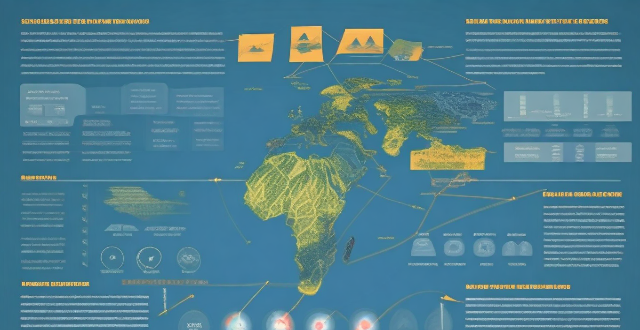
How does climate change influence the future of remote work and virtual employment ?
The article discusses the impact of climate change on the future of remote work and virtual employment. It states that rising temperatures, extreme weather events, and environmental concerns are driving factors for the shift towards remote work arrangements. As a result, there is an increasing demand for remote work options, technology advancements to support virtual employment, and a changing work culture that focuses on results rather than physical presence. The article concludes that embracing these changes can lead to a sustainable and efficient future of work.

What are the potential long-term consequences of climate change for future generations ?
The potential long-term consequences of climate change for future generations include environmental, social, and economic impacts. Environmentally, rising sea levels can cause coastal erosion and loss of island nations, while extreme weather events like hurricanes and wildfires become more frequent. Biodiversity loss is also a major concern, with species extinction and the spread of invasive species disrupting ecosystems. Socially, food security is threatened by changes in crop yields and water scarcity, while health risks increase due to heat-related illnesses and the spread of diseases. Displacement and migration may lead to conflict and instability. Economically, decreased productivity in agriculture and fisheries, increased adaptation and mitigation costs, and job losses contribute to economic instability. Addressing climate change requires global cooperation and significant investments in both adaptation and mitigation strategies to ensure a sustainable future.

What measures are taken to protect and preserve heritage sites for future generations ?
Heritage sites are invaluable treasures that provide insight into the history, culture, and traditions of a community or civilization. It is essential to protect and preserve these sites for future generations to appreciate and learn from. Here are some measures taken to safeguard heritage sites: 1. Legislation and Policies 2. Conservation and Restoration 3. Community Involvement and Education 4. Research and Documentation 5. Security Measures 6. Sustainable Tourism Practices
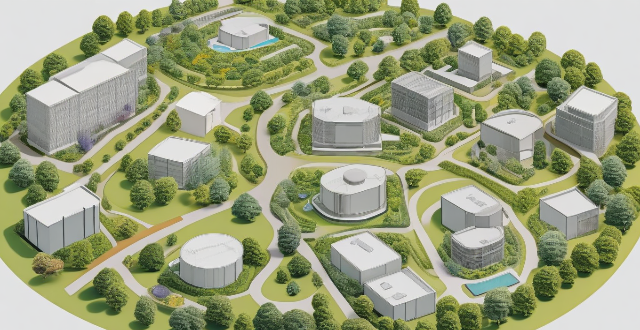
How do scientists use climate models to study the impact of human activities on the environment ?
Climate models are mathematical tools used to simulate the Earth's climate system and study the impact of human activities on the environment. The process involves data collection, model construction, scenario analysis, prediction and projection, and continuous validation and refinement. These models help policymakers make informed decisions about reducing greenhouse gas emissions and adapting to climate change.

What role does machine learning play in sports analytics ?
Machine learning is transforming sports analytics by analyzing player performance, team strategies, and game outcomes. It helps evaluate players' strengths and weaknesses, predict future performance, and develop training plans. Machine learning also aids in understanding how different team strategies affect game outcomes and predicting game results based on various factors. As technology advances, we can expect more innovative applications of machine learning in sports.

Can you explain the concept of technical analysis in the stock market ?
Technical analysis is a method used in the stock market to predict future price movements by studying past data. It involves identifying patterns and trends through chart analysis, support and resistance levels, trend identification, various indicators, and volume analysis. The process includes gathering data, selecting tools for analysis, analyzing the data, making predictions, and continuously monitoring and adjusting strategies. While it offers benefits such as objectivity and flexibility, it also has limitations, including not always being accurate and requiring practice to master.
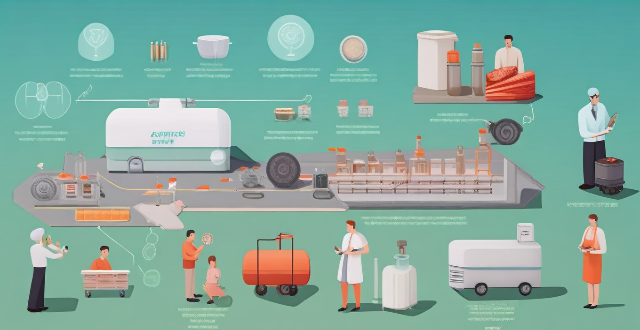
What role does technology play in climate adaptation ?
The article discusses the various ways in which technology can aid in climate adaptation. It mentions data collection and analysis, modeling and prediction, infrastructure development, agriculture and food security, water management, and health and well-being as key areas where technology is used. The article concludes that technology plays a crucial role in understanding and mitigating the challenges posed by climate change.
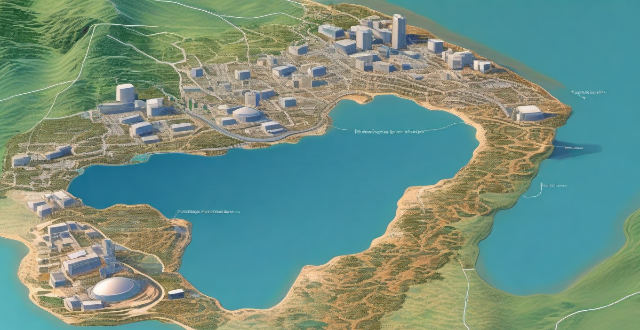
Can climate variability be predicted accurately ?
Climate variability refers to the fluctuations in temperature, precipitation, and other weather patterns over time. While it is difficult to predict climate variability with complete accuracy, scientists have made significant progress in understanding and forecasting these changes using a combination of observational data, climate models, and other tools. Factors contributing to climate variability include solar radiation, volcanic eruptions, human activities, ocean circulation, and El Niño Southern Oscillation (ENSO). Tools used for climate prediction include global climate models (GCMs), remote sensing, palaeoclimatology, weather stations and buoys, and reanalysis data. Continued research and advancements in technology will help improve our ability to predict future climate scenarios and inform decision-making related to climate change adaptation and mitigation strategies.

How do I educate my teenager about budgeting and money management ?
Teaching your teenager about budgeting and money management is crucial for their financial independence and future success. Start with basic concepts, provide an allowance to practice, set financial goals together, introduce banking and investment principles, use technology, lead by example, encourage part-time work, discuss credit and debt, and plan for the future. This continuous process requires patience, consistency, and practical examples to set your teen on a path to financial stability.
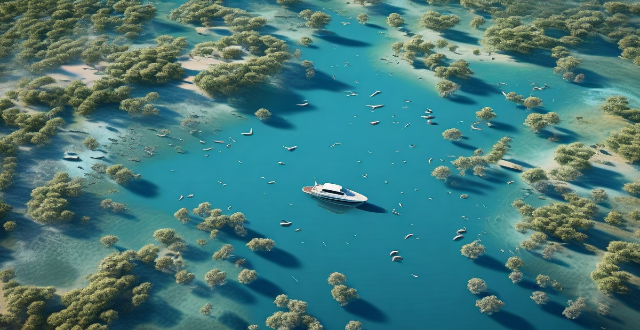
What role does the El Niño Southern Oscillation (ENSO) play in climate variability ?
The El Niño Southern Oscillation (ENSO) is a significant ocean-atmosphere phenomenon that influences global climate variability on inter-annual timescales. Its effects include changes in precipitation patterns, temperature fluctuations, and increased frequency of extreme weather events like hurricanes, floods, and droughts. ENSO's impact varies regionally, affecting areas such as North and South America, Australia, Africa, Asia, and Oceania differently. Understanding ENSO is essential for seasonal climate forecasting and plays a vital role in climate models used to predict future climate change scenarios.
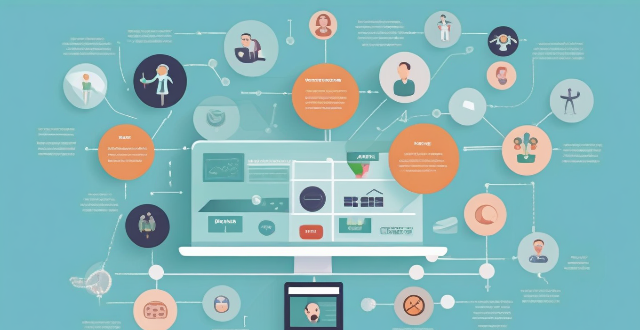
How do sports apps and online platforms engage fans and enhance their viewing experience ?
The article discusses how sports apps and online platforms have revolutionized the way fans engage with their favorite sports and teams. These digital tools offer a plethora of features that enhance the viewing experience and create a sense of community among fans. The main features include live streaming and on-demand content, interactive features such as polls, quizzes, and prediction games, social interaction through chat rooms, forums, and social media integration, personalization with customizable notifications and tailored content recommendations, and data analytics with player stats, team analytics, and game predictions. Overall, these digital tools create a more immersive and connected experience for fans, allowing them to stay up-to-date on their favorite sports and teams while enjoying the camaraderie of fellow fans.